Rest does not only mean taking short afternoon naps or your typical nightly sleep. Surprisingly, those shut-eye activities fall under just one type of rest. According to Saundra Dalton-Smith, M.D., "Rest should equal restoration in seven key areas in your life." Here are 7 types of rest every motion designer needs:
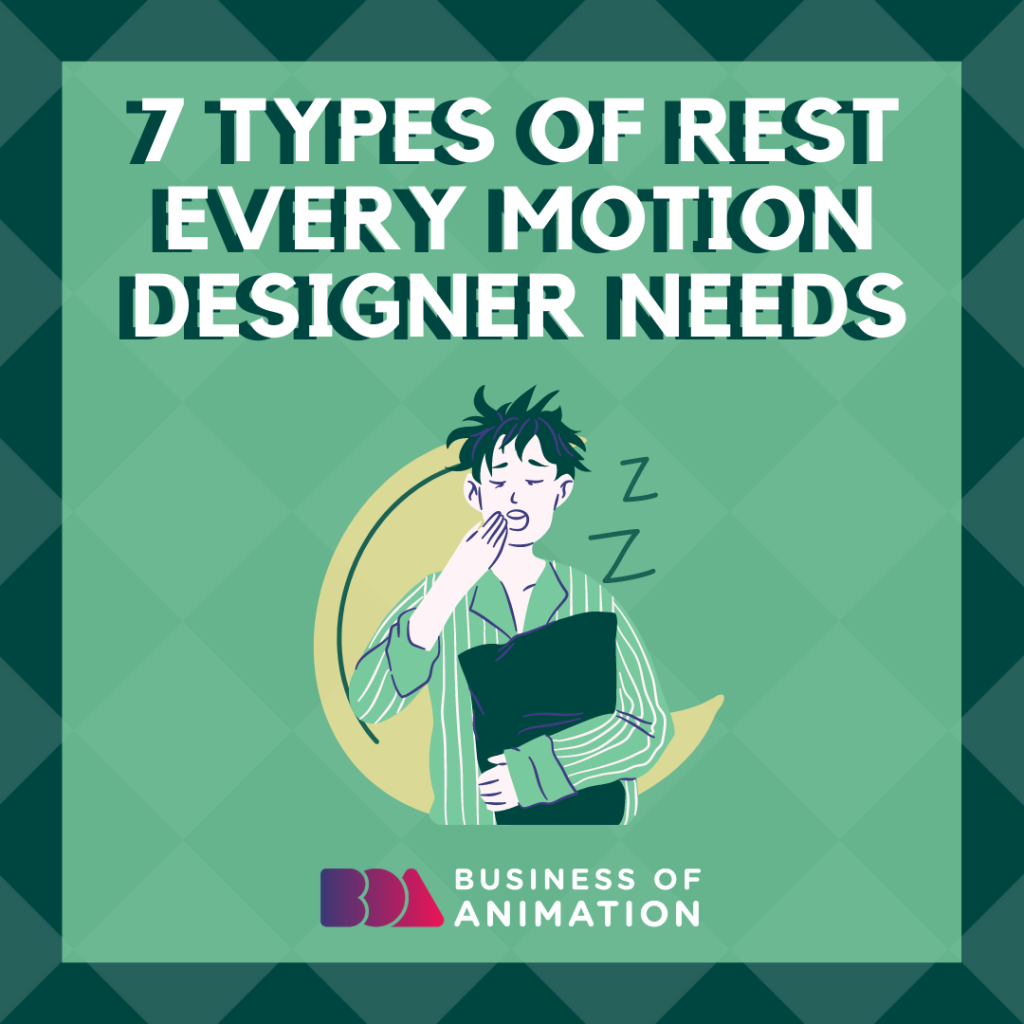
1. Physical Rest
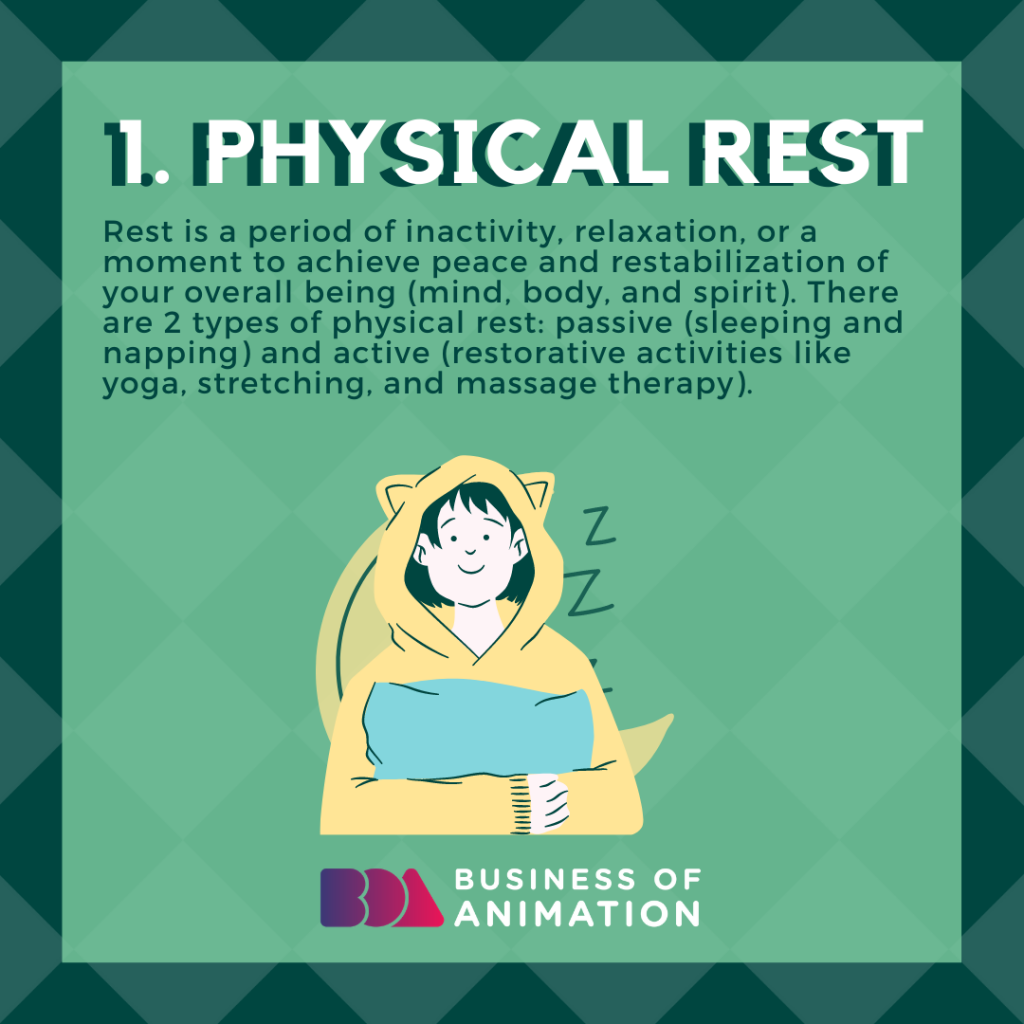
Rest is a period of inactivity, relaxation, or a moment to achieve peace and restabilization of your overall being (mind, body, and spirit). There are 2 types of physical rest: passive (sleeping and napping) and active (restorative activities like yoga, stretching, and massage therapy).
2. Mental Rest
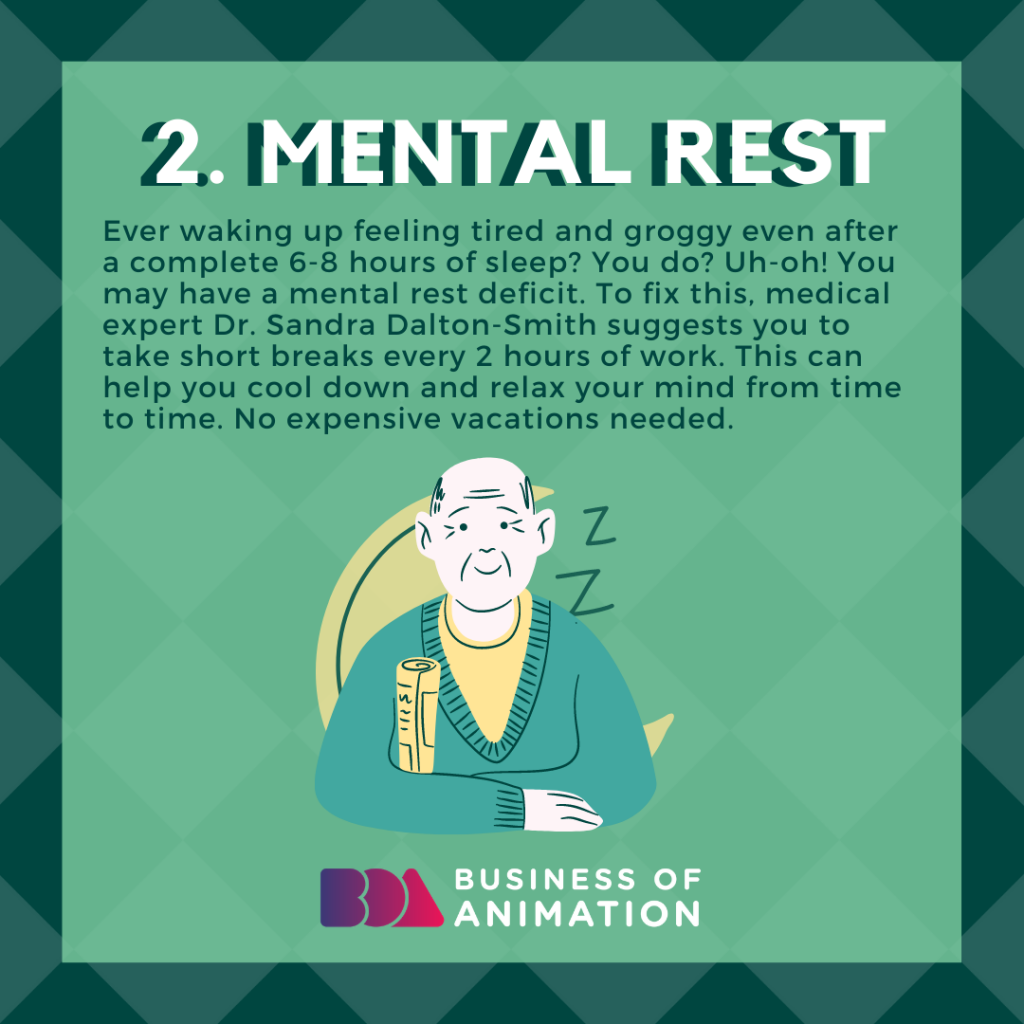
Ever waking up feeling tired and groggy even after a complete 6-8 hours of sleep? You do? Uh-oh! You may have a mental rest deficit. To fix this, medical expert Dr. Sandra Dalton-Smith suggests you to take short breaks every 2 hours of work. This can help you cool down and relax your mind from time to time. No expensive vacations needed.
3. Sensory Rest
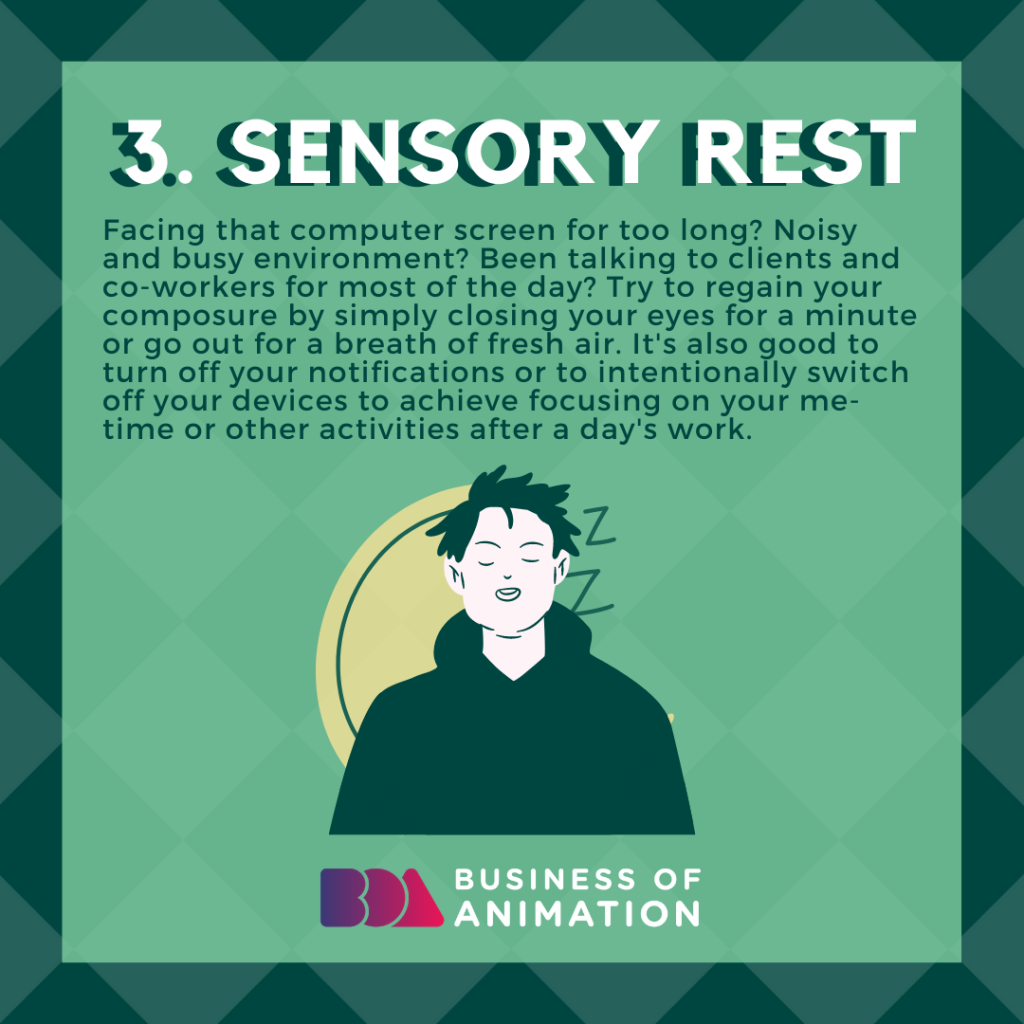
Facing that computer screen for too long? Noisy and busy environment? Been talking to clients and co-workers for most of the day? Try to regain your composure by simply closing your eyes for a minute or go out for a breath of fresh air. It's also good to turn off your notifications or to intentionally switch off your devices to achieve focusing on your me-time or other activities after a day's work.
4. Creative Rest

Animators, graphic designers, artists, writers, innovators, or people who are problem-solvers need this fourth type of rest to "reawaken their awe and wonder." Take the time to go out for walks, enjoy the outdoors, and appreciate the beauty of nature. Aside from making your background more vivid and aesthetically pleasing, surrounding yourself with your favorite works of art at home or even in your workspace can spark inspiration and help boost your creativity and keep those ideas flowing.
5. Emotional Rest
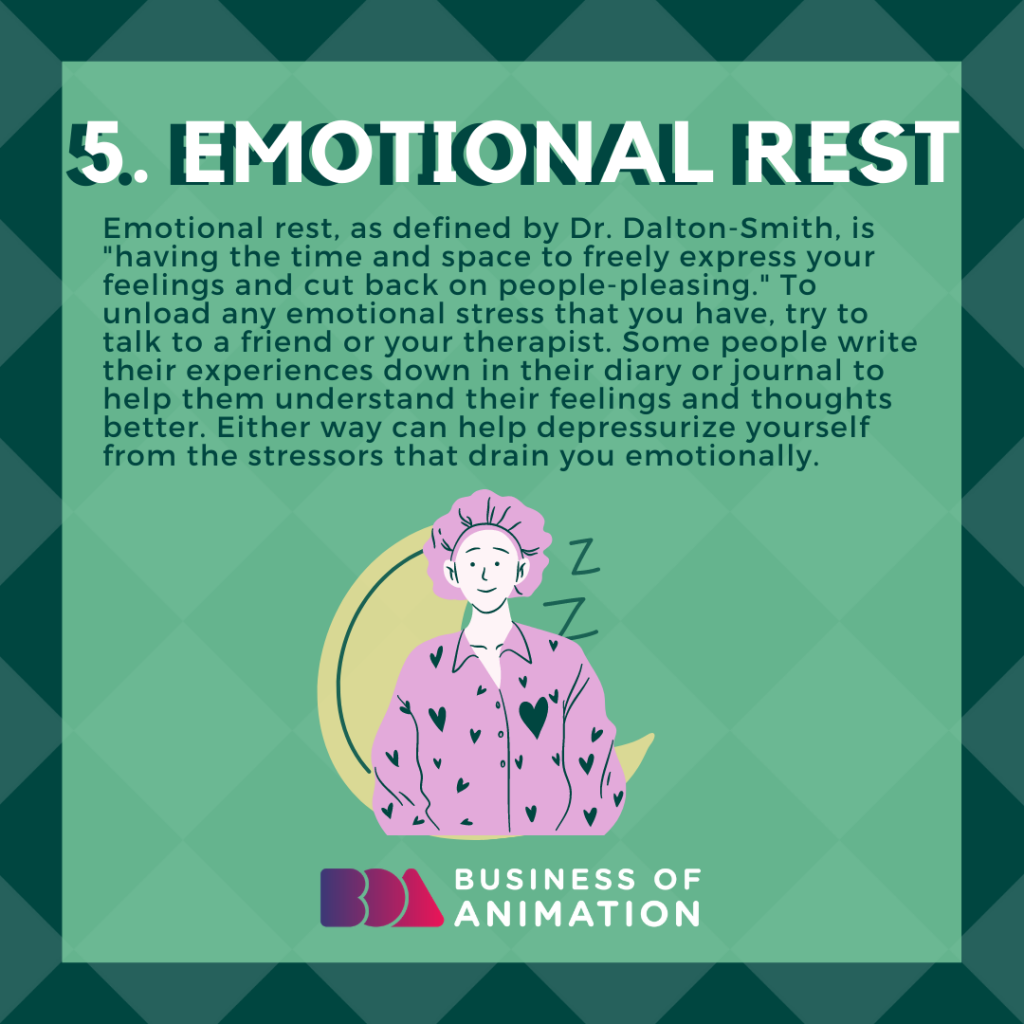
Emotional rest, as defined by Dr. Dalton-Smith, is "having the time and space to freely express your feelings and cut back on people-pleasing." To unload any emotional stress that you have, try to talk to a friend or your therapist. Some people write their experiences down in their diary or journal to help them understand their feelings and thoughts better. Either way can help depressurize yourself from the stressors that drain your emotionally.
6. Social Rest
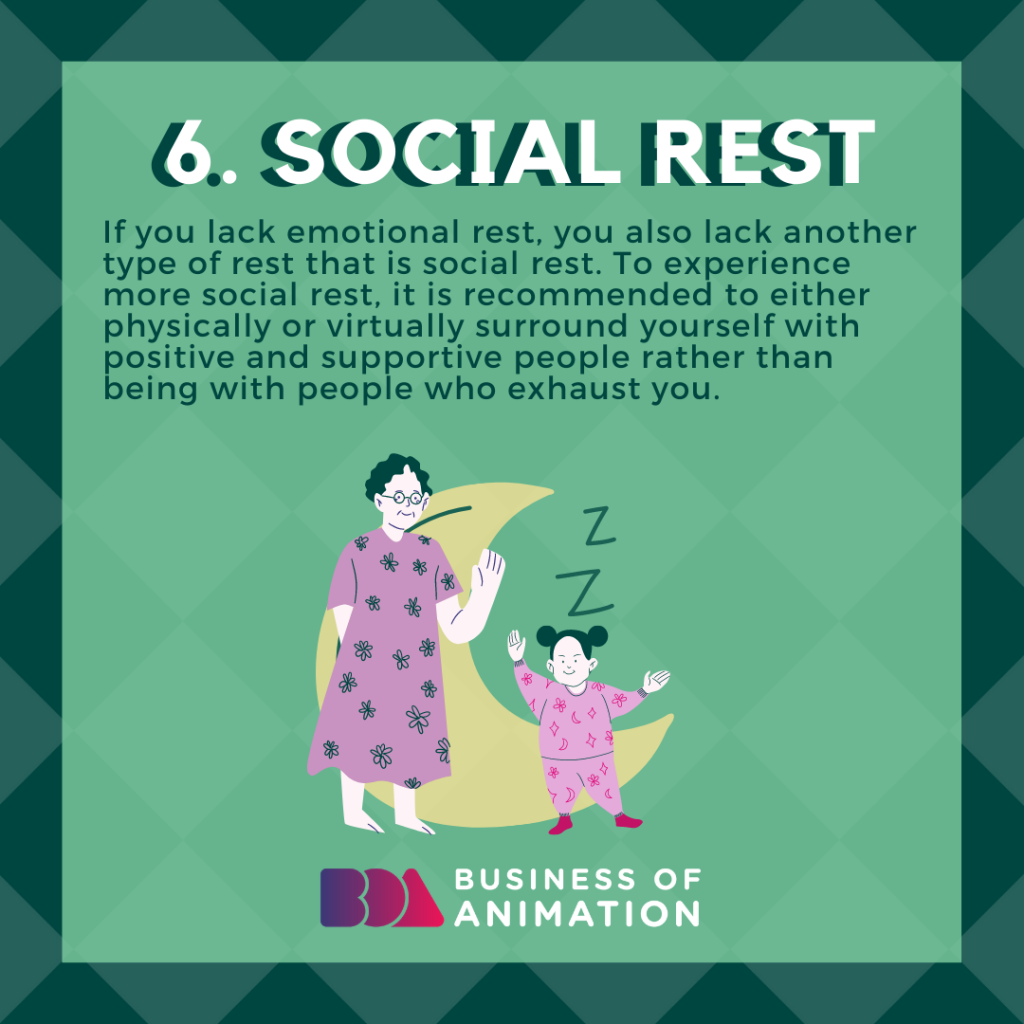
If you lack emotional rest, you also lack another type of rest that is social rest. To experience more social rest, it is recommended to either physically or virtually surround yourself with positive people rather than being with people who exhaust you.
7. Spiritual Rest
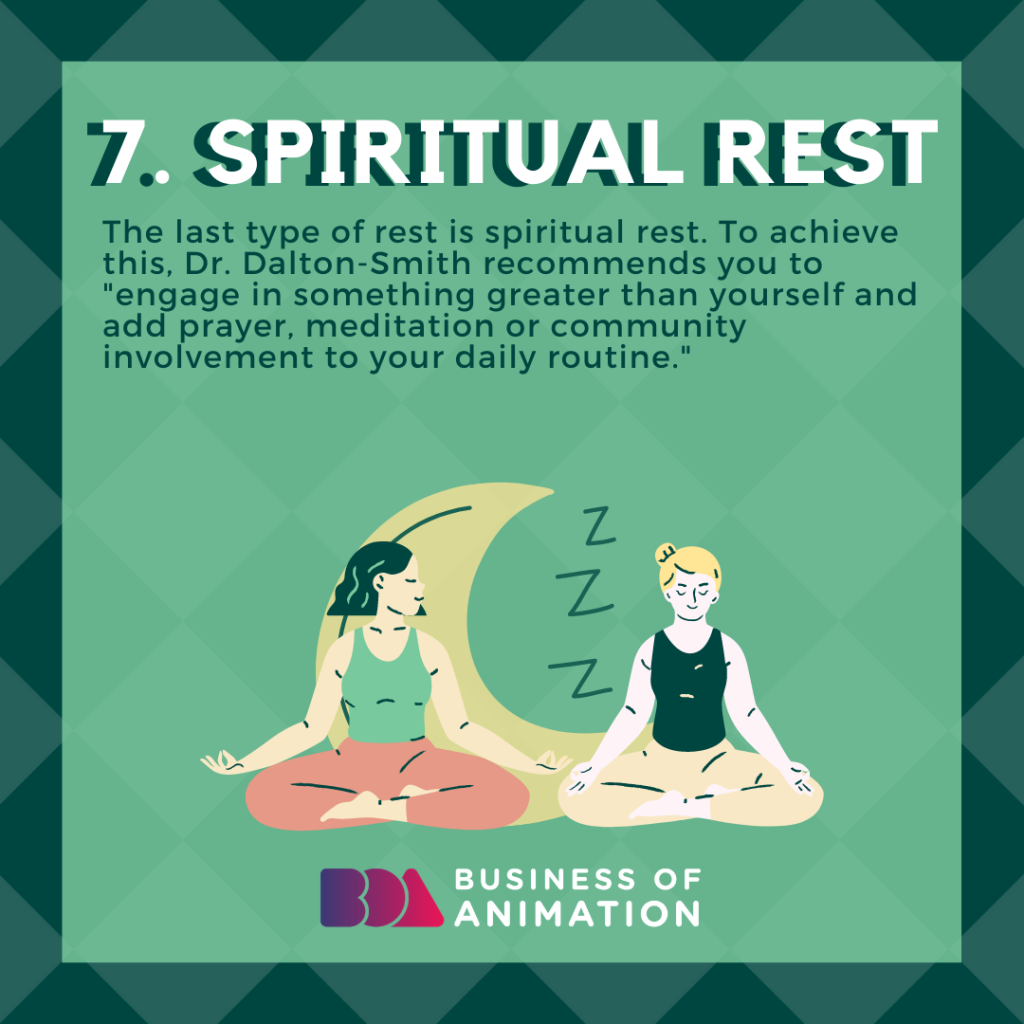
The last type of rest is spiritual rest. To achieve this, Dr. Dalton-Smith recommends you to "engage in something greater than yourself and add prayer, meditation or community involvement to your daily routine."



